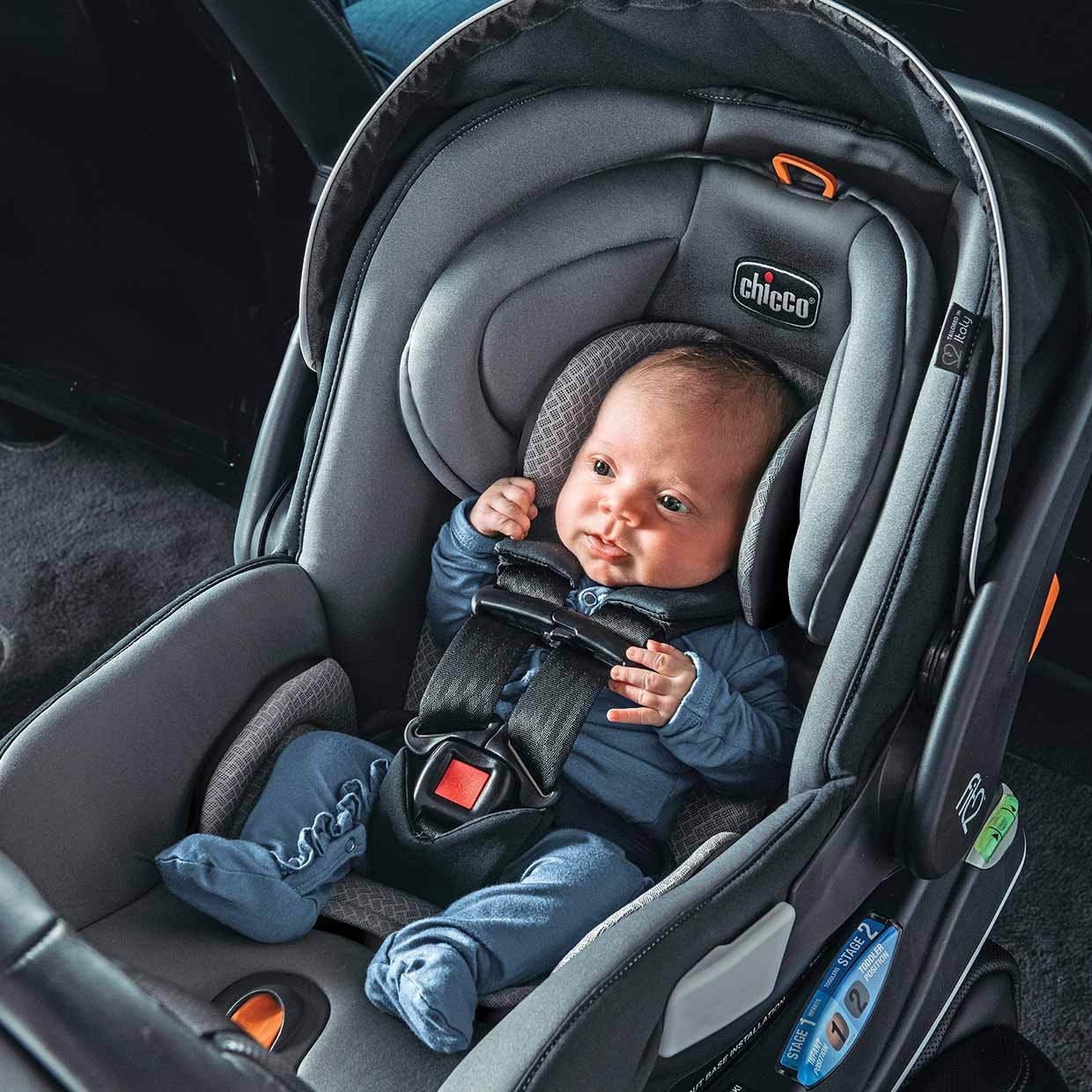Ridesharing services like Lyft have become indispensable for modern transportation, offering convenience at our fingertips. But for parents, especially those navigating city life with young children, a crucial question arises: Do Lyft Cars Have Car Seats? Understanding your options for safe and compliant rides with your little ones is paramount. This guide will explore Lyft’s car seat policies, compare them to alternatives, and provide essential tips for stress-free ridesharing with kids.
Lyft’s Car Seat Mode: Your Ridesharing Solution for Toddlers
Yes, Lyft does offer a service designed for families needing car seats. It’s called Lyft Car Seat Mode. This option allows you to request a ride in a vehicle equipped with a car seat, making it easier to travel with toddlers without the hassle of carrying your own seat.
Availability and Service Areas of Lyft Car Seat Mode
Lyft Car Seat Mode is not universally available, and its presence depends on the city you’re in. While Lyft aims to expand this service, it is currently offered in select locations. It’s essential to check the Lyft app in your specific city to see if “Car Seat” is listed as a ride option. Typically, larger metropolitan areas are more likely to offer this service due to demand.
Child Requirements for Using Lyft Car Seat Mode
To utilize Lyft’s car seat service, your child must meet specific criteria to ensure safety and proper car seat usage. These requirements are in place to align with car seat safety standards and the forward-facing car seats provided by Lyft. Generally, the guidelines are as follows:
- Age: Children must be at least two years old.
- Weight: They should weigh between 22 and 48 pounds.
- Height: Their height should be within the range of 31 to 52 inches.
It’s crucial to verify these requirements within the Lyft app or on their official help pages as they are subject to updates. These guidelines are in place for the safety of your child when using the forward-facing car seat provided by Lyft.
Understanding the Cost and Fees Associated with Lyft Car Seat
Convenience often comes with a price, and Lyft Car Seat Mode is no exception. Typically, there is an additional fee of approximately $10 added to your ride fare when you select the “Car Seat” option. This surcharge accounts for the specialized service of providing a vehicle with a pre-installed car seat. The exact fee may vary slightly by city, so always confirm the total estimated fare within the app before confirming your ride.
Step-by-Step Guide: How to Request Lyft Car Seat Mode
Requesting a Lyft ride with a car seat is a straightforward process using the Lyft app. Here’s how you can do it:
- Open the Lyft App: Launch the Lyft app on your smartphone and ensure you are logged into your account.
- Enter Destination: Input your desired destination in the “Where to?” field.
- Select “Car Seat” Ride Type: After entering your destination, you’ll be presented with different ride options. Look for the “Car Seat” option. It’s usually listed amongst other ride types like “Lyft,” “Lyft XL,” etc.
- Confirm and Request: Tap on the “Car Seat” option. Review the estimated fare, including the car seat surcharge, and then tap “Request Lyft Car Seat.”
It’s advisable to request your ride a bit earlier than usual when using Car Seat Mode, as there might be fewer drivers equipped with car seats, potentially leading to slightly longer wait times.
When Lyft Car Seat Mode Isn’t Available: Bringing Your Own Car Seat
If Lyft Car Seat Mode isn’t available in your city, or if your child doesn’t meet the criteria for using the provided car seat, you’ll need to bring your own car seat. This is a common scenario, especially for infants and younger toddlers requiring rear-facing seats, or for families with multiple young children.
Choosing the Right Car Seat to Bring for Your Lyft Ride
Selecting the right car seat to bring with you is crucial for convenience and safety. Consider these car seat types:
- Infant Car Seats: Ideal for babies, these are portable and often come with bases that stay in the car, though you won’t be using the base in a Lyft. They are designed for rear-facing use only.
- Convertible Car Seats: These seats convert from rear-facing to forward-facing as your child grows. They can be bulkier but offer extended use.
- All-in-One Car Seats: These seats transition from rear-facing to forward-facing to booster seat, offering the longest usage span. They can be the heaviest and largest option to carry.
For ease of transport in rideshares, an infant car seat might be the most manageable, especially when paired with a stroller. For older toddlers who are forward-facing, a lightweight convertible car seat could be a good option.
Tips for Installing Your Car Seat in a Lyft Vehicle
Installing your own car seat in a Lyft requires some preparation and know-how. Here are essential tips:
- Practice Installation: Before relying on rideshare services, practice installing your car seat using both the vehicle seat belt and LATCH system (if applicable) at home. Familiarize yourself with your car seat’s manual.
- Vehicle Seat Belt Installation: Most car seats are compatible with vehicle seat belt installation, which is the method you’ll likely use in a Lyft. Understand the correct belt path for rear-facing and forward-facing installation for your seat.
- Allow Extra Time: Inform your driver you’ll be installing a car seat and will need a few extra minutes. Choose a safe pickup spot where the driver can pull over without obstructing traffic.
- Secure Installation: Ensure the car seat is tightly installed. It should move less than one inch side-to-side or front-to-back at the belt path. Double-check belt routing and tightness.
- Level and Angle: For rear-facing seats, ensure the car seat is at the correct recline angle according to the manufacturer’s instructions.
Always prioritize safety. If you are unsure about the installation, it’s better to reschedule the ride and seek assistance from a certified child passenger safety technician (CPST) to learn proper car seat installation.
Lyft Car Seat Policy Compared to Uber Car Seat
While both Lyft and Uber offer car seat options, there are similarities and differences to be aware of:
- Availability: Both services have limited availability for car seat options, concentrated in larger cities. Check each app for your location.
- Car Seat Type: Both typically provide forward-facing car seats. This means they cater to toddlers meeting specific age, weight, and height requirements. Neither service typically provides rear-facing car seats.
- Child Requirements: The child safety guidelines for age, weight, and height are very similar between Lyft and Uber’s car seat services.
- Fees: Both Lyft and Uber usually add a surcharge of around $10 for rides using the car seat option.
- Driver Training: Lyft emphasizes that drivers participating in Car Seat Mode receive training on car seat installation and maintenance. Uber’s information on driver training for car seat vehicles is less emphasized publicly.
Choosing Between Lyft and Uber for Families:
If both services are available in your area, and both offer car seat options, the choice might come down to:
- App Preference: User interface and app experience can be a deciding factor.
- Wait Times and Availability: Check wait times for car seat rides in both apps at your location and time of travel.
- Driver Reviews/Ratings: If you have preferences based on past experiences with either service.
For families needing rear-facing car seats or traveling with infants, the car seat service offered by either app is not a solution, and bringing your own car seat remains necessary.
Tips for Ensuring a Smooth and Safe Lyft Ride with Children
Whether you’re using Lyft Car Seat Mode or bringing your own car seat, these tips will help ensure a smoother, safer ride:
- Prepare Your Child: Talk to your child about riding in the Lyft. Bring familiar toys, books, or snacks to keep them content during the journey.
- Communicate with Your Driver: Inform your driver that you have a child and if you’re installing a car seat. Clear communication fosters understanding and patience.
- Safety First: Always prioritize car seat safety. Double-check the harness tightness, car seat installation, and ensure your child is correctly secured before the ride begins.
- Pickup Location: Choose a safe and convenient pickup spot, away from heavy traffic if possible, to allow for safe car seat installation and loading.
- Be Patient: Riding with children can sometimes be unpredictable. Allow extra time and be prepared for potential delays.
Conclusion: Navigating Ridesharing with Car Seats
Navigating ridesharing with young children requires planning and awareness of your options. Do Lyft cars have car seats? Yes, in select cities, Lyft offers Car Seat Mode, providing a convenient option for toddlers meeting specific size requirements. However, this service is not universally available and uses forward-facing car seats only.
For infants, younger toddlers, or when Lyft Car Seat Mode isn’t accessible, bringing your own car seat is essential. Understanding car seat installation, choosing the right type of seat, and communicating with your driver are key to safe and stress-free ridesharing experiences with your children. Always prioritize your child’s safety and familiarize yourself with the latest policies from Lyft and other ridesharing services to make informed decisions for your family’s transportation needs.
For more helpful parenting tips and information on car seat safety, explore our blog!

